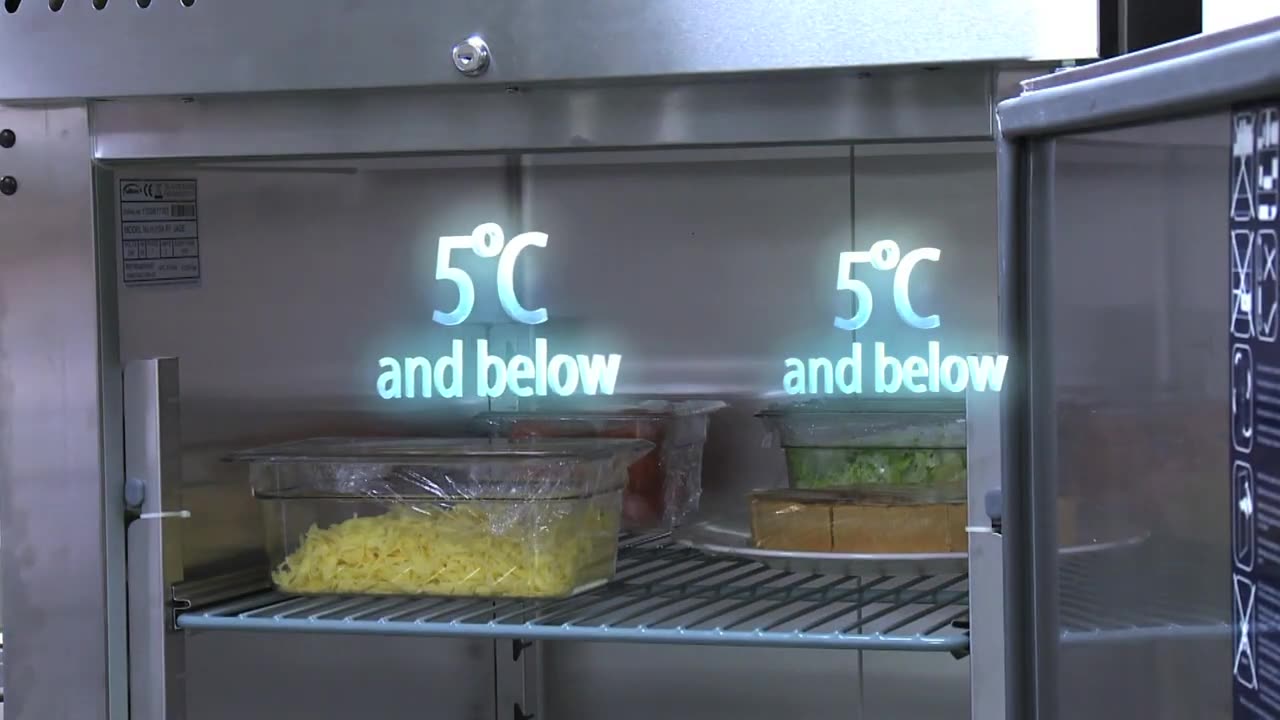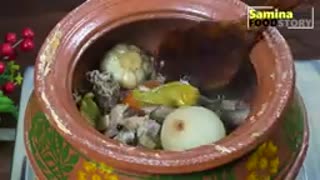Premium Only Content

Food safety coaching (Part 7)_ Chilled storage and display
### **Food Safety Coaching (Part 7) – Chilled Storage and Display**
Proper chilled storage and display are critical for maintaining food safety, especially for perishable and high-risk foods. Storing and displaying food at the correct temperature slows bacterial growth and preserves freshness, ensuring food remains safe for consumption.
---
### **Why Chilled Storage and Display Matter**
1. **Prevents Bacterial Growth:**
- Harmful bacteria thrive in the "danger zone" between **5°C and 63°C**. Keeping food below 5°C inhibits bacterial multiplication.
2. **Preserves Quality:**
- Proper chilling maintains food’s texture, taste, and nutritional value.
3. **Reduces Waste:**
- Slows spoilage, extending the shelf life of food.
---
### **Best Practices for Chilled Storage**
#### **1. Maintain the Right Temperature**
- Refrigerators should operate at **≤5°C**.
- Use a **thermometer** to monitor temperature regularly.
- Freezers should operate at **-18°C or below** for frozen foods.
#### **2. Store High-Risk Foods Correctly**
- Place perishable items (e.g., meat, poultry, dairy, seafood) in the coldest part of the fridge.
- Keep cooked and ready-to-eat foods separate from raw foods to prevent cross-contamination.
#### **3. Use Airtight Containers or Wraps**
- Store food in sealed containers or wrap them tightly to prevent moisture loss and contamination.
#### **4. Avoid Overloading the Fridge**
- Overcrowding prevents cold air from circulating, leading to uneven cooling.
#### **5. Organize Based on Food Type**
- Place raw meat, poultry, and seafood on the bottom shelf to prevent juices from dripping onto other foods.
- Store ready-to-eat foods and leftovers on the top shelves.
#### **6. Label and Date Stored Food**
- Mark containers with the date of storage to track freshness.
- Follow the **First In, First Out (FIFO)** principle to use older food first.
---
### **Best Practices for Chilled Display**
#### **1. Maintain Display Temperatures**
- Ensure chilled display units keep food at **≤5°C**.
- Use built-in thermometers to monitor and adjust the temperature as needed.
#### **2. Regularly Check Food Temperatures**
- Use a probe thermometer to verify food temperatures, especially for prepackaged or bulk items.
#### **3. Avoid Overfilling Display Units**
- Allow cold air to circulate around the food to maintain consistent temperatures.
#### **4. Rotate Stock Frequently**
- Replace displayed food with fresh stock regularly to maintain quality and safety.
- Remove expired or potentially unsafe items immediately.
#### **5. Protect Food from Contamination**
- Use sneeze guards, covers, or lids to shield food from physical contamination.
- Ensure packaging is intact for prepacked items.
#### **6. Monitor and Clean Display Units**
- Clean display units regularly to prevent the buildup of spills, debris, or ice.
---
### **Foods That Require Chilled Storage and Display**
- **High-Risk Foods:**
- Raw and cooked meat, poultry, and seafood.
- Dairy products such as milk, cheese, yogurt, and cream.
- Ready-to-eat foods like sandwiches, salads, and deli meats.
- Pre-cut fruits and vegetables.
- **Packaged Foods with “Keep Refrigerated” Labels:**
- Always follow manufacturer instructions for chilled storage.
---
### **Common Mistakes to Avoid**
1. **Storing Hot Food Directly in the Fridge:**
- Hot food raises the internal temperature of the fridge, putting other items at risk. Cool hot food quickly before refrigerating.
2. **Ignoring Temperature Fluctuations:**
- Regularly check fridge and display unit temperatures to ensure they are within safe limits.
3. **Overcrowding Storage Areas:**
- Crowded fridges and displays block airflow, leading to uneven cooling.
4. **Relying on Visual Inspections Alone:**
- Food may appear fine but could be unsafe if stored at the wrong temperature.
---
### **Key Tips for Safe Chilled Storage and Display**
- Use separate fridges or sections for raw and ready-to-eat foods.
- Regularly service and maintain refrigeration and display equipment.
- Train staff on proper handling, storage, and display practices.
- Keep records of temperature checks for quality assurance.
---
### **Key Reminder**
Proper chilled storage and display are essential for food safety. Always prioritize maintaining appropriate temperatures, preventing cross-contamination, and ensuring equipment functions effectively.
Would you like specific advice on chilled storage for a particular type of food or scenario?
-
 7:58
7:58
HSESafetyInformation
8 months agoAuthentic Peshawari Rosh _ Namkeen Gosht Recipe __ Traditional KPK and Baluchistan
741 -
 1:20:42
1:20:42
The Connect: With Johnny Mitchell
6 days ago $9.74 earnedThe Truth Behind The U.S. Invasion Of Venezuela: Ed Calderon Exposes American Regime Change Secrets
31.5K15 -
 2:10:18
2:10:18
FreshandFit
5 hours agoAfter Hours w/ Girls
123K27 -
 2:06:29
2:06:29
TimcastIRL
11 hours agoAirlines Cancel Over 700 Flights, Travel APOCALYPSE Is Now, Trump Says END FILIBUSTER | Timcast IRL
227K103 -
 9:02:44
9:02:44
SpartakusLIVE
16 hours agoTOXIC Solos on ARC Raiders || Friday Night HYPE - WZ or Redsec Later?
75.7K2 -
 2:15:42
2:15:42
TheSaltyCracker
8 hours agoWoke is DEAD ReeEEStream 11-07-25
121K215 -
 1:29:13
1:29:13
Sarah Westall
7 hours agoThe City of London: Infiltration, Intimidation & Centralized Power w/ Mike Harris
49.1K13 -
 10:14:18
10:14:18
Dr Disrespect
18 hours ago🔴LIVE - DR DISRESPECT - ARC RAIDERS - AGAINST ALL DANGER
200K26 -
 32:09
32:09
ThisIsDeLaCruz
1 day ago $5.78 earnedFalling In Reverse: Christian Thompson’s Stage Tech Revealed
43.6K7 -
 4:41:02
4:41:02
SynthTrax & DJ Cheezus Livestreams
1 day agoFriday Night Synthwave 80s 90s Electronica and more DJ MIX Livestream 80s Night / Late Night Nostalgia
51.3K5